Passion. Fight. Resilience. Dedication. Pride. Inspiration.
These are just some of the words that sum up the history of Women's Football in Australia.
The roaring success of the Matildas in this century would not have been possible if it was not for some of the amazing and inspirational people that brought the women's game out of decades of obscurity in the 1970's.
From the first public match in Brisbane in the 1921, to the Matildas reaching the Semi Finals of an Olympic Games in 2021, we take a look at 100 years of women's football in Australia.
The beginning
There are reports of "ladies" teams being formed in New South Wales as early as 1903, but the first public match of association football between two women's teams occurred when North Brisbane defeated South Brisbane 2-0 at the Brisbane Cricket Ground (now The Gabba) on 24 September 1921.
North Brisbane was referred to as the ‘Reds’ and South Brisbane the ‘Blues’, and they were both kitted out in full football uniforms. Over 10,000 people attended the match, which is surely a record that stood for quite some time.
The match took place after momentum began to pick up in Brisbane, following the forming of the first ever women's team in Australia - the LaTrobe Ladies - as well as a few others, and ultimately the formation of the The Queensland Women’s Ladies Soccer Football Association.
Another public match took place in October in Ipswich, drawing another big crowd of over 3,000 supporters. This time, North and South Brisbane played out an entertaining 2-2 draw.
You can read more about the first match via Football Queensland

The momentum stops
The momentum built in Brisbane in 1921 was diminished not long after, following the ban on women's football by the English Football Association. Strictly it was not a ban on the game, it was a request to clubs belonging to the Association to refuse the use of their grounds for such matches. A request that could not reasonably be refused!
The FA argued that "the game of football is quite unsuitable for females and ought not to be encouraged." They have since apologised...
The impact was also felt in Australia, with public opinion flowing in favour of the FA's stance. A committee developed in Australia also recommended that football was "medically inappropriate" for women to play, and encouraged females to instead participate in the likes of swimming, rowing, cycling and horseback riding.
Despite this, practice matches continued to be played in Brisbane and Queensland. However, the momentum was waning, and the sport never took off around the country the way it initially did in Brisbane.
Women's football would fall into relative obscurity for decades...
The resurgence of the women's game
Bring on the 1970's. Football in Australia has many individual figures to thank for where our game is today, and a large majority of them come from the early 70's.
The Australian Men's National Team, having missed out on qualification for the 1970 FIFA World Cup, appointed Rale Rasic as head coach, who guided the Socceroos to their first FIFA World Cup four years later in West Germany.
The historic achievement lifted the game to new heights in Australia, and the women's game benefitted massively. By 1974 there were regular women's football leagues established in most states, however, there was no national competition for clubs to aspire to.
That all changed in August 1974, when the campaigning of Dr Oscar Mate of Perth and Pat O'Connor of Sydney to establish a national championship was realised.
The the first National Women's Soccer Championships were held in Sydney, comprising of five teams; NSW, Northern NSW (going by Macquarie and Districts), VIC, WA and South QLD.
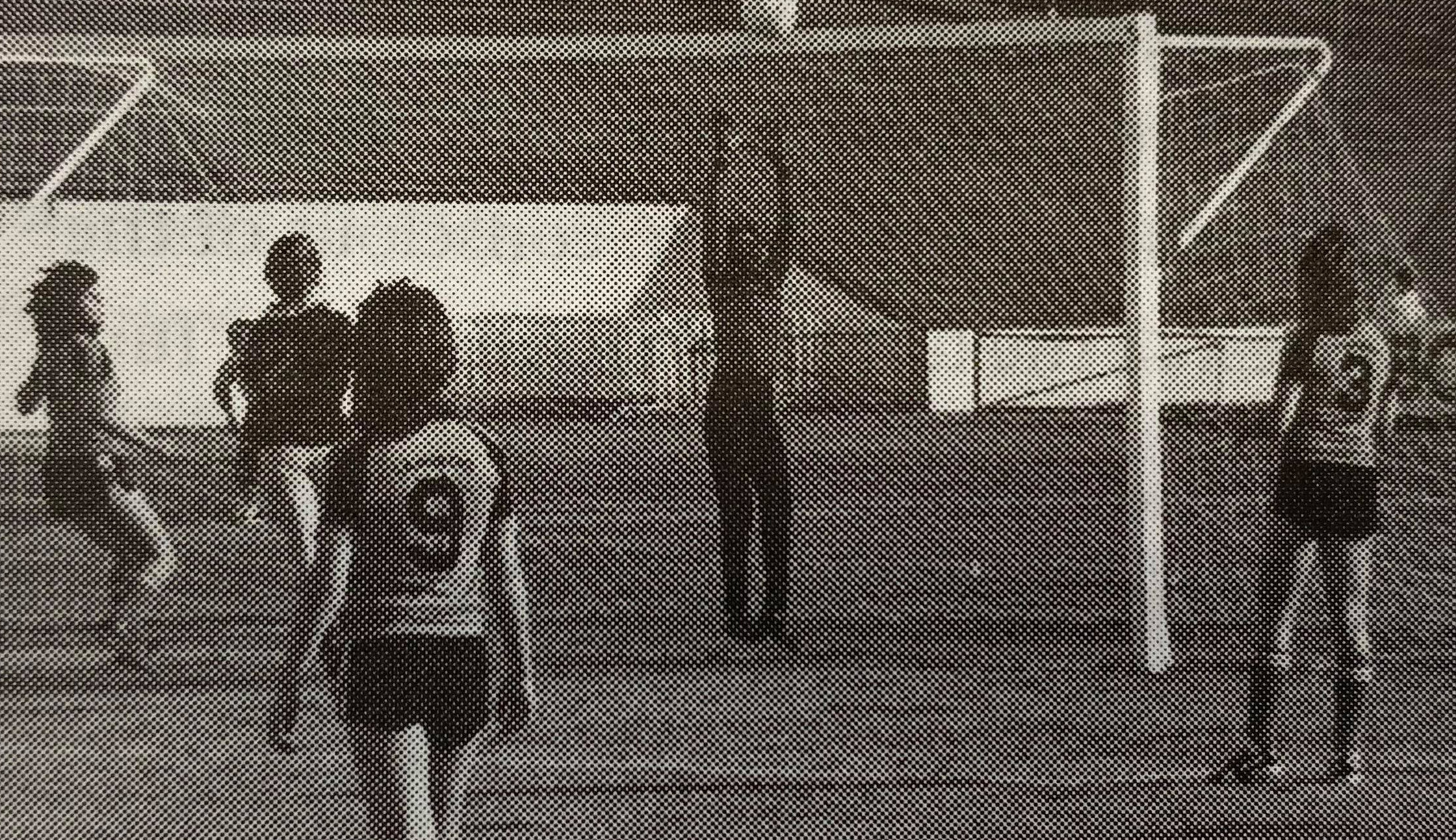
Games were held in Bankstown, Granville and Centennial Park, with the home team taking out the first Championship, with Northern NSW being the runners-up.
Towards the end of the week of the matches, an important meeting took place. The team officials met to discuss the establishment of an organisation to promote, foster and manage women's football in Australia, and thus the Australian Women's Soccer Association (AWSA) was formed.
Dr Oscar Mate was appointed President, Pat O'Connor as Secretary, Jacqui Ager as Treasurer, Rale Rasic as National Adviser, and Nick Bray as Publicity Officer. Frank Clarke was initially made Vice President, but declined due to his workload with the Brisbane Association. Instead, it was Elaine Watson who was elected into the Vice Presidency role.
This landmark agreement paved the way for the National Champions to succeed, being played every year until 1993. The Championships expanded over the years with the introduction of Junior (1983) and Youth (1985) divisions, a testament to the growing game in Australia.
Australia at the 1975 Asian Women's Championship
An Australian team was invited to participate at the 1975 Asian Women's Championship in Hong Kong, organised by the Asian Ladies' Football Confederation (ALFC), and the majority of the squad was made up of players from St. George, coached by Joe O'Connor, and some players from Ingleburn.
The competition was initially set out to be a club competition, but evolved into am international tournament. The team received permission from the FIFA-recognised governing body of Australia at the time, the Australian Soccer Federation (ASF), to refer to themselves as an 'Australian XI' and compete in Green & Gold uniforms.

However, as it was not a team selected to be a national one, the squad is not classified as part of the history of the Australian Women's National Team, which officially began in 1978. The tournament was also organised by the ALFC, which was not recognised by AFC or FIFA, and reports suggest games were only 60 minutes long.
The Australian XI, who reached Hong Kong through many months of fundraising, eventually finished third in the tournament, securing wins over Singapore and Malaysia.
Australian team for the 1975 Asian Women's Championship in Hong Kong: Pat O’Connor (captain), Trixie Tagg, Julie Dolan, Connie Selby, Christel Abenthum, Kim Coates, Gundy Zarins, Lynn Everett Miller, Stacey Tracy, Sue Larsen, Sue Taylor, Lynn McKenzie, Sue Binns, Vicky Kohen, Cindy Heydon and Trudy Fischer.
The pioneers: the beginning of the Australian Women's National Team
As more rumblings of a Women's World Cup went by without fruition, the next taste Australia would get at an international tournament was when they were invited to the inaugural World Women's Invitational Tournament in Taipei, Taiwan in 1978.
The team, coached by Jim Selby, featured seven players from New South Wales, seven from West Australian, and one each from Victoria and Queensland. Without any financial support from the Federal Government, due to political reasons with the host country, it was looking likely that the team was not able to travel. However, the China Football Association agreed to meet the costs of all the international airfares as well as internal costs. All that needed to be covered by Australia was domestic airfares and uniforms.
Australia was the only nation to send a national team, with other countries sending club teams. Therefore, all matches played by Australia at the tournament are considered 'B' internationals. Australia finished eighth overall in the Invitational out of 12, and the world got a taste of what an international women's tournament could be.
Australian team for the 1978 World Women's Invitational Tournament in Taipei: Connie Selby (captain), Julie Dolan, Leigh Wardell, Toni McMahon, Kim Coates, Cindy Heydon, Sharon Pearson, Sue Monteath, Monika Werner, Sharon Loveless, Judy Pettitt, Sandra Brentnall, Teresa Varadi, Barbara Kozak, Julie Clayton, and Anna Senjuschenko.
The first 'A' international
On October 6, 1979 at Seymour Shaw Park in Miranda, Sydney, history was made. The Australian Women's National Team competed in their first ever 'A' international, facing Trans-Tasman opponents New Zealand.
The match finished 2-2, with Sandra Brentnall and Sharon Loveless scoring for Australia. It was the first of a three-match series, with New Zealand winning the second match 1-0 at the same venue, before Australia won 1-0 in the third game at Perry Park in Brisbane, meaning the series finished in a draw.
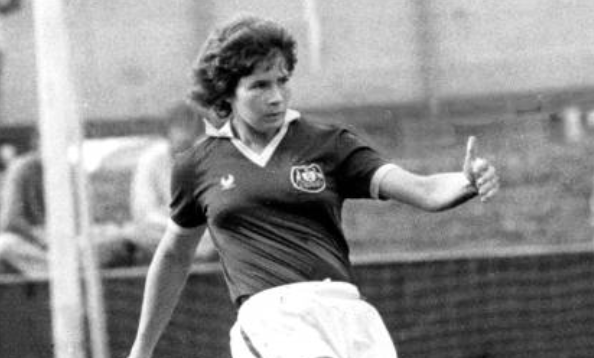
Australia squad for the first ever 'A' internationals: Julie Dolan (captain), Toni McMahon, Cindy Heydon, Leigh Wardell, Jamie Rosman, Rose Van Bruinessen, Sue Monteath, Diana Hall, Carla Grims, Fiona McKenzie, Kim Coates, Shona Bass, Sharon Mateljan, Judy Pettit, Sandra Brentnall, and Julie Clayton.
The series was replicated in New Zealand the following year, with matches taking place in Auckland, Wellington and Christchurch. Australia fought back from 3-0 down to draw the first match 3-3, scored an equaliser in the second game to see it finish 1-1, and won the decider 3-2 in a thrilling match, with Sandra Brentnall scoring a hat-trick.
The next few years saw Australia continue to face off against New Zealand, before the formation of the Oceania Women's Football Confederation, led by Elaine Watson, who was the President of the Steering Committee. The inaugural OWFC meeting took place in October 1982, with Watson elected Vice-President, and Karen Donaldson of New Zealand elected President. The formation of the OWFC led to the first ever Oceania Women's Championship, played in November/December of 1983 in New Caledonia. Australia, New Zealand, Fiji and the hosts competed in the inaugural tournament, won by New Zealand after a 3-2 extra-time win over Australia in the Final.
The second tournament was held in New Zealand in 1987, which featured the hosts, a New Zealand 'B' team, Australia and guests Chinese Taipei. Australia made the Final again but were defeated 4-1 by Chinese Taipei, with New Zealand A defeating New Zealand B in the third-place match.
Australia hosted the next tournament in March 1989, with matches taking place in Brisbane. Chinese Taipei were crowned Champions again, this time defeating New Zealand in the Final. Australia entered two teams this time, but the third-place playoff between Australia A and Australia B was cancelled due to a waterlogged pitch.
Australia on the world stage: the 1988 FIFA Women's Invitational
The growth of the women's game continued around the world, and as calls grew for a FIFA Women's World Cup tournament, a Women's Invitational tournament was organised by FIFA in China in 1988 to test if a global women's World Cup was feasible.
Australia was one of the 12 nations involved, alongside Brazil (South America), Ivory Coast (Africa), United States and Canada (North America), China PR, Japan, and Thailand (Asia), and Netherlands, Norway, Sweden and Czechoslovakia (Europe).
Australia's opening game was against South American powerhouse Brazil, and thanks to an incredible chip from Janine Riddington, Australia secured a historic 1-0 win to kick off their tournament. The next game saw Australia defeat Thailand 3-0, before falling by the same scoreline to Norway. The two wins were enough for Australia to reach the Quarter Finals, but were bested by hosts China PR.
The tournament was a raring success and, three years later in 1991, the inaugural FIFA Women's World Cup was held, with China hosting the tournament. Australia missed out on qualification after losing the Oceania Cup to New Zealand on goal difference. There was still reluctancy by FIFA to use the 'World Cup' name, so the official name for the first tournament was the '1st FIFA World Championship for Women's Football for the M&M's Cup'.
First ever continental trophy for the Australian Women's National Team
After the disappointment of missing out on the inaugural World Cup, Australia managed to qualify for the next tournament in 1995 thanks to winning the Oceania Cup in 1994. The Oceania Cup was held in Papua New Guinea from 14-20 October, and both Australia in New Zealand - the same as in the previous tournament - secured wins against each other. It would come down to goal difference once again. Australia played Papua New Guinea in their final game, winning 4-0. Which meant New Zealand needed to win 10 goals in their final game against Papua New Guinea to qualify. They only won 6-0, meaning Australia became Champions of Oceania for the first time, and qualified for the 1995 FIFA Women's World Cup in Sweden.
Australia were drawn in Group C, facing women's football powerhouses United States, China PR and Denmark. It was a tough introduction to the World Cup, losing 5-0 to Denmark in the opener, 4-2 to China PR in the second game, and 4-1 against United States in the third.
Angela Iannotta scored Australia's first ever goal at the FIFA Women's World Cup in the loss to China, with Sunni Hughes and Lisa Casagrande also etching themselves in the history books with goals for Australia. Since 1995, Australia have qualified for every FIFA Women's World Cup (1999, 2003, 2007, 2011, 2015, 2019 and 2023 (as hosts).
The 1995 FIFA Women's World Cup was also the first tournament at which the team was referred to as the 'Matildas'. In the lead up to the tournament, the team had been informally and even officially referred to as the 'Female Socceroos'. The AWSA and SBS combined to run a TV vote to determine the new name for the Women's National Team, with the shortlist being; the Soccertoos, the Lorikeets, the Waratahs, the Blue Flyers, and the Matildas.
Thankfully, the Matildas was the winner, and the name stuck, even with some initial reservations from the players. Sharon Young, who played for Australia in four 'A' internationals in 1992, put the Matildas name forward after the mascot of the 1982 Commonwealth Games held in Brisbane, which was a giant kangaroo called 'Matilda'.
30 years later the Matildas name has firmly stuck, and the team is now one of the most popular national teams in the country.
.png)
The establishment of the first national domestic league
Following the end of the National Women's Soccer Championships, a national league was established in 1996, called the Ansett Summer Series up until 2000, and then known as the National Women's Soccer League from 2000-2004.
The league comprised of six teams initially - representing South Australia, the Australian Capital Territory, Northern New South Wales, New South Wales, Queensland and Victoria - while Western Australia joined the league in 2004, playing six games before the league folded.
While the teams were initially 'state' teams, they developed into club sides, called Adelaide Sensation, Canberra Eclipse, Northern NSW Pride, NSW Sapphire, Queensland Sting, Victoria Vision and Western Waves.
Queensland was the most successful club in the competition, winning the Championship four times (once as the Queensland Academy of Sport, and three times as Queensland Sting).

The competition disbanded at the same time as the Men's National Soccer League (NSL), and it was not for another four years that a national domestic league was established, with the birth of the W-League.
The Matildas at the Olympic Games
Women's Football was first introduced at the Olympic Games in 1996 in Atlanta. The qualification process was through the 1995 FIFA Women's World Cup, which saw the top eight sides qualify.
Unlike the men's competition, the women's has no age limit, and the 2000 tournament featured a full-strength Matildas team. Australia went down 3-0 in the opening game against eventual Bronze Medalists Germany, recovered for a 1-1 draw against Sweden, but lost 2-1 to Brazil in the third and exited the tournament at the group stage.
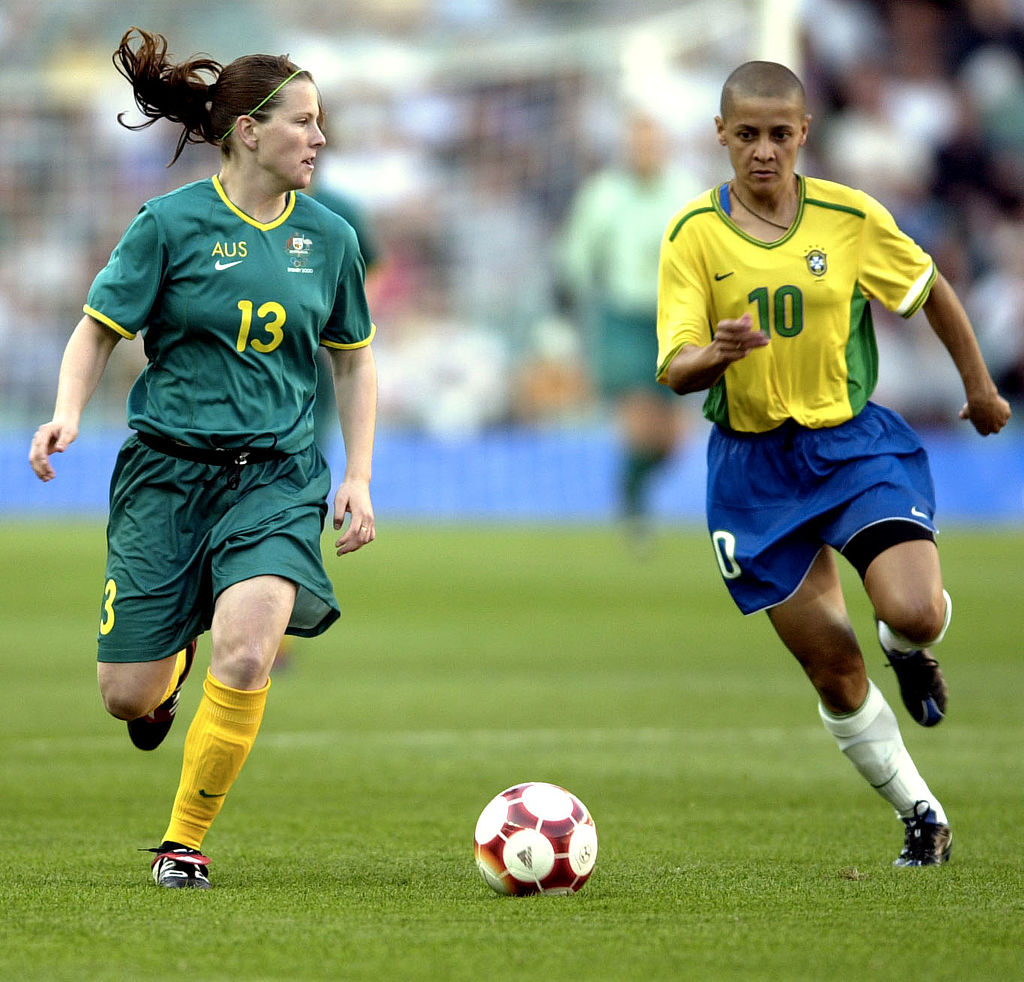
In 2004 the Aussies qualified from the group for the first time, beating Greece 1-0 after losing to Brazil, and then securing a famous 1-1 draw with the United States, courtesy of an 82nd minute Joey Peters goal. However, the team was beaten in the Quarter Finals following a 2-1 loss to Sweden.
Australia's next appearance was 12 years later at the Rio Olympics in 2016, drawing Canada, Germany and Zimbabwe in their group. A 2-0 loss to Canada first up was followed by a 2-2 draw with Germany, and passage to the Quarter Finals was sealed with a 6-1 win over Zimbabwe.
Australia were drawn against Brazil in the Quarters, but were knocked out via a penalty shootout after the game finished 0-0.
The Matildas returned to the Olympics in Tokyo, reaching the 2020 Games with five wins out of five in the qualifying tournament.
Australia was drawn against New Zealand, Sweden and the United States in the group stage, facing off against our Trans-Tasman rivals in the opener.
Tameka Yallop and Sam Kerr scored to give Australia a 2-1 win, starting off the tournament with a bang. Over 1.87 million Australians tuned into the Matildas second group stage match against Sweden, a broadcast record for a women's team sport in the country, but it was the Swedes who ran out 4-2 winners in an entertaining game.
The Matildas needed a point against reigning World Champions USA in the final group game, and a strong performance saw them keep the United States scoreless in a 0-0 draw.
The Matildas faced Great Britain in the Quarter Finals, and prevailed in one of the teams' greatest ever victories. After scoring late to secure a 2-2 draw at the end of regular time, Sam Kerr and Mary Fowler struck in extra-time, following a penalty save from Teagan Micah, to hand the Matildas a 4-3 victory and passage to the Semi Finals.
Australia would face Sweden in the Semi Finals for a spot in the Gold Medal Match, but a cruel deflection led to a Swedish goal early in the second half, and it was all they needed for a 1-0 win. The Matildas would face USA in the Bronze Medal Match, but also fell by a goal, losing 4-3 to the USA.
Despite the heartbreaking end to the tournament, Tokyo 2020 was the Matildas best ever performance at an Olympic Games, claiming fourth spot and equalling the Olyroos' heroics at the 1992 Games.
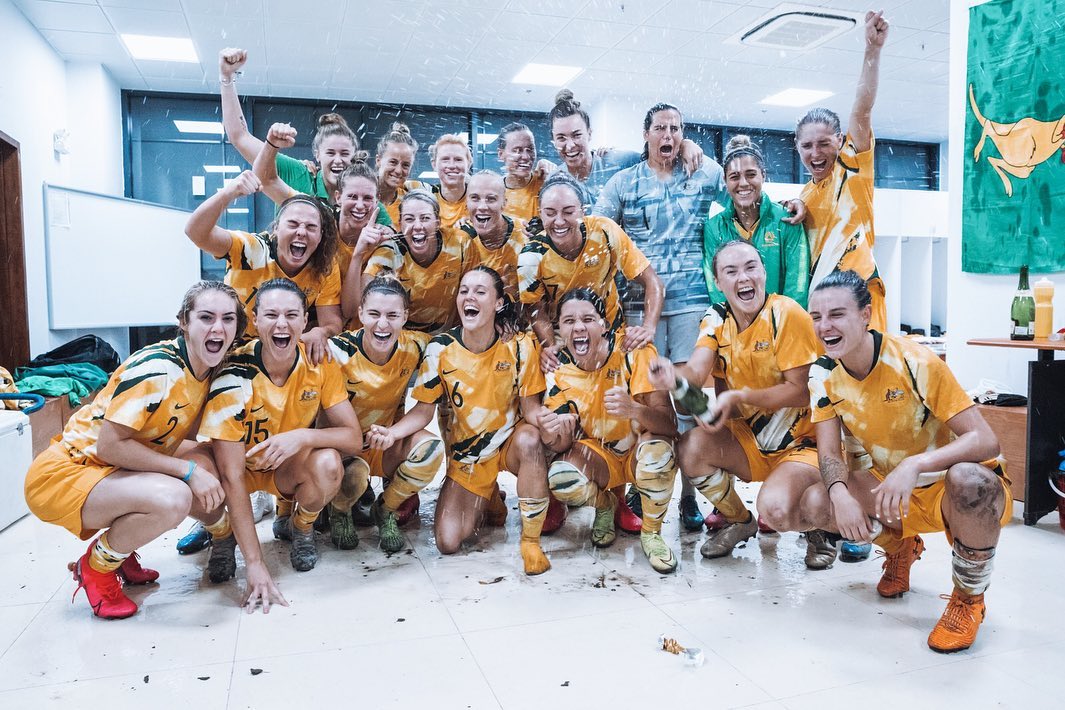
Becoming FFA & moving into Asia
In 2003 the Australian Women's Soccer Association - which had administered and developed the women's game in Australia for almost 30 years - was absorbed into the Australian Soccer Association, which then became Football Federation Australia in 2004.
It was a tumultuous period for the game. The NSL and NWSL ceased and after a gap of two years the A-League was introduced. Despite the upheaval, the Socceroos qualified for the 2006 FIFA World Cup. This was a big boost for the game in Australia, as was the decision to move into the Asian Football Confederation from Oceania.
In 2006 Australia took part in and hosted its first Asian Football Confederation tournament, the AFC Women’s Cup of Nations. The games were played at Hindmarsh Stadium and Marden Sports Complex in Adelaide. China PR became Champions, beating the Matildas on penalties in the Final.
After only being able to reach the Group Stage in the 1999 and 2003 FIFA Women's World Cups, Australia reached a major milestone at the next tournament in China in 2007. The Matildas on their first ever game - a 4-1 victory over Ghana in their opener - before a 1-1 draw with Norway set up a thrilling final group game against Canada.
The Matildas needed a win or draw to advance to the Quarter Finals for the first time. Trailing 2-1 heading into injury time, Cheryl Salisbury managed to find the back of the net in the 92nd minute, securing a 2-2 draw and helping the Matildas reach the last eight of the tournament. Australia fell 3-2 to Brazil in the Quarters, but had finally made their mark at an international tournament. Tom Sermanni was later named AFC Coach of the Year.

The birth of the W-League
Following the disbanding of the WNSL in 2004, it was not until 2008 until Australia had another women's domestic league when the W-League - known as the Westfield W-League from 2008-2021 - was formed.
The clubs that entered in the W-League 2008/09 season were aligned with the already-established A-League clubs, with the exception of Canberra United.
The inaugural teams in the competition were:
- Adelaide United (SA)
- Canberra United (ACT)
- Central Coast Mariners (NSW)
- Melbourne Victory (VIC)
- Newcastle Jets (NSW)
- Perth Glory (WA)
- Queensland Roar (QLD - now Brisbane Roar)
- Sydney FC (NSW)
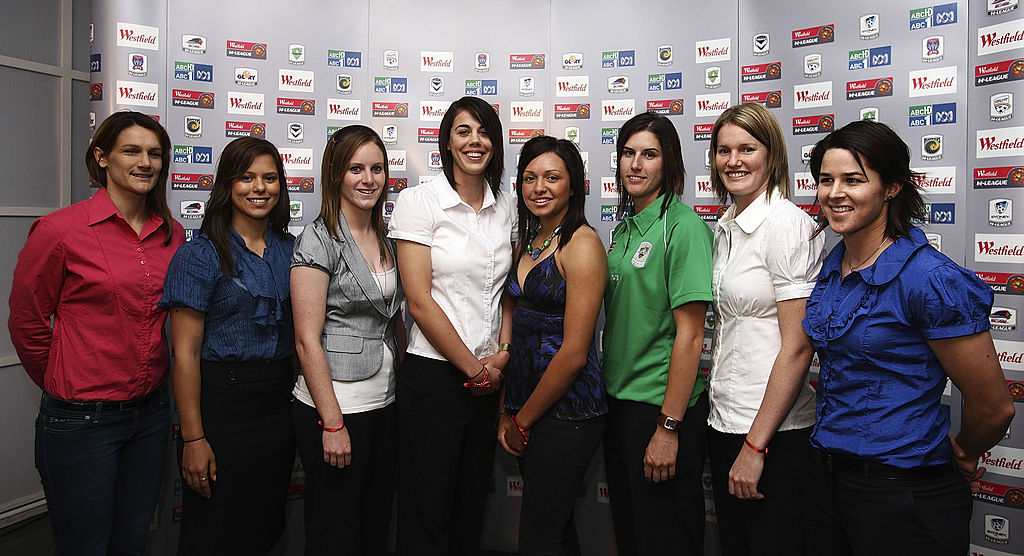
The first ever W-League match took place on 25 October 2008, with Perth Glory hosting Sydney FC. Following the same format as the men's competition, the Premiership was crowned to the team at the top of the table at the end of the season, and the Champions were the winner of the Grand Final in a four-team Finals Series. Queensland Roar were both the Premiers and Champions of the first season.
The W-League was reduced to seven teams in 2010/11 when the Central Coast Mariners pulled out due to financial reasons, and returned to eight teams when Western Sydney Wanderers were formed in 2012/13.
The competition then expanded to nine teams in 2015, with Melbourne City, going on to win every regular season game on their way to the Premiership and Championship in their inaugural season.
As of 2021 the competition remains with nine teams, having officially become independent of Football Australia at the end of 2020, operating under the new entity called the 'Australian Professional Leagues'.
Melbourne City are the newest but most successful team in W-League history, winning two Premierships and four Championships.
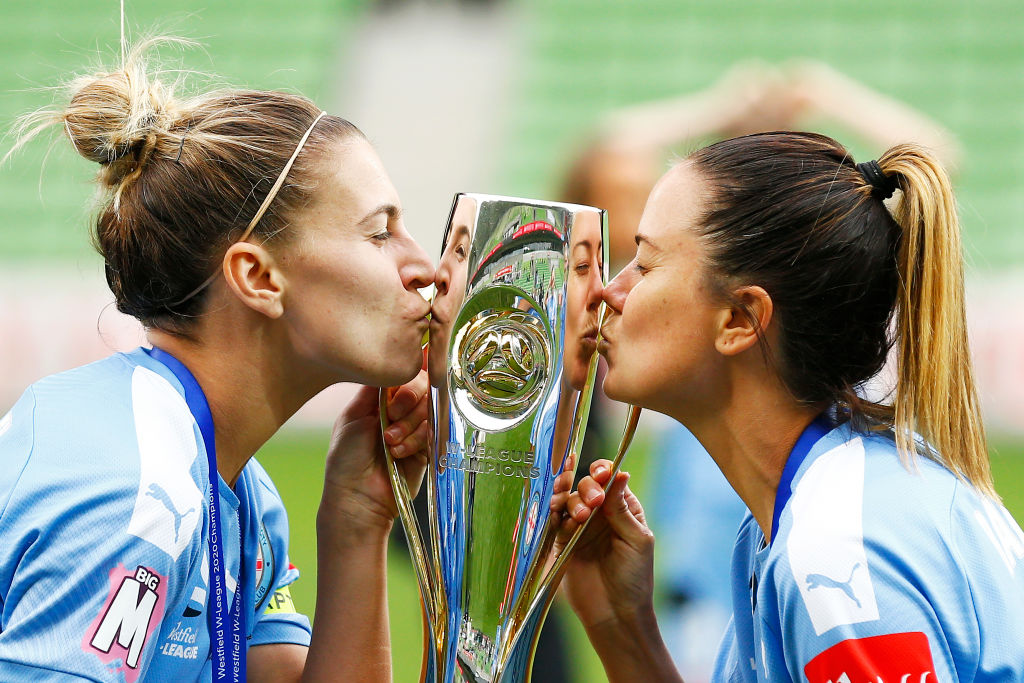
Becoming Champions of Asia
In 2010, the Matildas made history in China at the 2010 AFC Women's Asian Cup. In just their third try, and after the heartbreak of a penalty shootout defeat at home in the 2006 tournament, the Matildas became Champions of Asia in thrilling fashion.
With wins over Vietnam and Korea Republic in the group stage, Australia then went on to defeat Japan in the Semi Finals courtesy of a Kate Gill goal on the stroke of half time. They would meet DPR Korea in the Final, and after the game finished at 1-1 after extra courtesy of a Sam Kerr goal, the Matildas won 5-4 on penalties, with an 18-year-old Kyah Simon converting the fifth and final penalty to seal victory.

The Matildas have made the Final each time since then - in 2014 and 2018 - but have fallen to Japan on both occasions in the decider.
Rising up the rankings & sell-out crowds
The Matildas continued to grow from their Quarter Finals showings at the 2007, 2011 and 2015 FIFA Women's World Cups, as well as their 2010 AFC Women's Asian Cup triumph and runners-up performance at the 2014 tournament. The side reached the 2016 Rio Olympics and bowed out in heartbreaking fashion against hosts Brazil, but the side bounced back and proved they were one of the best teams in the world by winning the 2017 Tournament of Nations, with wins over Japan, Brazil and the United States.
The Matildas were then ranked an all-time high fourth in the world by the end of 2017 off the back of a seven-game winning streak. 2017 saw the Matildas sell out matches in Australia for the first time, setting attendance records with matches against Brazil in Penrith & Newcastle.
In 2019, a Matildas friendly against Chile at Bankwest Stadium in Sydney, set a record for a women's international match when 20,029 fans came out to watch on a Saturday afternoon, 40 years after the first ever 'A' international took place in the same city.

So close in Tokyo
Under new coach Tony Gustavsson, the Matildas played out their best ever performance at an international tournament at the Tokyo 2020 Olympic Games.
Australia was drawn against New Zealand, Sweden and the United States in the group stage, facing off against our Trans-Tasman rivals in the opener.
Tameka Yallop and Sam Kerr scored to give Australia a 2-1 win, starting off the tournament with a bang. Over 1.87 million Australians tuned into the Matildas second group stage match against Sweden, a broadcast record for a women's team sport in the country, but it was the Swedes who ran out 4-2 winners in an entertaining game.
The Matildas needed a point against reigning World Champions USA in the final group game, and a strong defensive performance saw them keep the United States scoreless in a 0-0 draw.
The Matildas faced Great Britain in the Quarter Finals, and prevailed in one of the teams' greatest ever victories. After scoring late to secure a 2-2 draw at the end of regular time, Sam Kerr and Mary Fowler struck in extra-time, following a penalty save from Teagan Micah, to hand the Matildas a 4-3 victory and passage to the Semi Finals.
Australia would face Sweden in the Semi Finals for a spot in the Gold Medal Match, but a cruel deflection led to a Sweden goal early in the second half, and it was all they needed for a 1-0 win. The Matildas would face USA in the Bronze Medal Match, but also fell by a goal, losing 4-3 to the USA.
Despite the heartbreaking end to the tournament, Tokyo 2020 was the Matildas best ever performance at an Olympic Games, claiming fourth spot and equalling the Olyroos' heroics at the 1992 Games.
